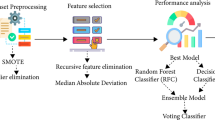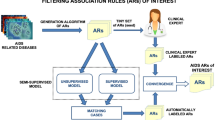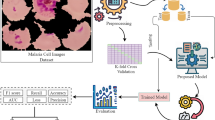Abstract
Although deep learning algorithms show increasing promise for disease diagnosis, their use with rapid diagnostic tests performed in the field has not been extensively tested. Here we use deep learning to classify images of rapid human immunodeficiency virus (HIV) tests acquired in rural South Africa. Using newly developed image capture protocols with the Samsung SM-P585 tablet, 60 fieldworkers routinely collected images of HIV lateral flow tests. From a library of 11,374 images, deep learning algorithms were trained to classify tests as positive or negative. A pilot field study of the algorithms deployed as a mobile application demonstrated high levels of sensitivity (97.8%) and specificity (100%) compared with traditional visual interpretation by humans—experienced nurses and newly trained community health worker staff—and reduced the number of false positives and false negatives. Our findings lay the foundations for a new paradigm of deep learning–enabled diagnostics in low- and middle-income countries, termed REASSURED diagnostics1, an acronym for real-time connectivity, ease of specimen collection, affordable, sensitive, specific, user-friendly, rapid, equipment-free and deliverable. Such diagnostics have the potential to provide a platform for workforce training, quality assurance, decision support and mobile connectivity to inform disease control strategies, strengthen healthcare system efficiency and improve patient outcomes and outbreak management in emerging infections.
This is a preview of subscription content, access via your institution
Access options
Access Nature and 54 other Nature Portfolio journals
Get Nature+, our best-value online-access subscription
$32.99 / 30 days
cancel any time
Subscribe to this journal
Receive 12 print issues and online access
$259.00 per year
only $21.58 per issue
Buy this article
- Purchase on SpringerLink
- Instant access to full article PDF
Prices may be subject to local taxes which are calculated during checkout




Similar content being viewed by others
Data availability
The datasets generated during and/or analyzed during the current study are available from the AHRI data repository https://doi.org/10.23664/AHRI.M-AFRICA.2019.V1.
Code availability
Custom code used in this study is available at the public repository https://xip.uclb.com/product/classify_ai.
References
Land, K. J., Boeras, D. I., Chen, X.-S., Ramsay, A. R. & Peeling, R. W. REASSURED diagnostics to inform disease control strategies, strengthen health systems and improve patient outcomes. Nat. Microbiol. 4, 46–54 (2019).
Second WHO Model List of Essential In Vitro Diagnostics (WHO, 2019).
Peeling, R. W. Diagnostics in a digital age: an opportunity to strengthen health systems and improve health outcomes. Int. Health 7, 384–389 (2015).
Ghani, A. C., Burgess, D. H., Reynolds, A. & Rousseau, C. Expanding the role of diagnostic and prognostic tools for infectious diseases in resource-poor settings. Nature 528, S50–S52 (2015).
Figueroa, C. et al. Reliability of HIV rapid diagnostic tests for self-testing compared with testing by health-care workers: a systematic review and meta-analysis. Lancet HIV 5, e277–e290 (2018).
Klarkowski, D. B. et al. The evaluation of a rapid in situ HIV confirmation test in a programme with a high failure rate of the WHO HIV two-test diagnostic algorithm. PLoS ONE 4, e4351 (2009).
Gray, R. H. et al. Limitations of rapid HIV-1 tests during screening for trials in Uganda: diagnostic test accuracy study. Brit. Med. J. 335, 188 (2007).
Martin, E. G., Salaru, G., Paul, S. M. & Cadoff, E. M. Use of a rapid HIV testing algorithm to improve linkage to care. J. Clin. Virol. 52, S11–S15 (2011).
Cham, F. et al. The World Health Organization African region external quality assessment scheme for anti-HIV serology. Afr. J. Lab. Med. 1, 39 (2012).
Galiwango, R. M. et al. Evaluation of current rapid HIV test algorithms in Rakai, Uganda. J. Virol. Methods 192, 25–27 (2013).
Louis, F. J. et al. Evaluation of an external quality assessment program for HIV testing in Haiti, 2006–2011. Am. J. Clin. Pathol. 140, 867–871 (2013).
Peck, R. B. et al. What should the ideal HIV self-test look like? A usability study of test prototypes in unsupervised HIV self-testing in Kenya, Malawi, and South Africa. AIDS Behav. 18, 422–432 (2014).
Baveewo, S. et al. Potential for false positive HIV test results with the serial rapid HIV testing algorithm. BMC Res. Notes 5, 154 (2012).
Crucitti, T., Taylor, D., Beelaert, G., Fransen, K. & Van Damme, L. Performance of a rapid and simple HIV testing algorithm in a multicenter phase III microbicide clinical trial. Clin. Vaccine Immunol. 18, 1480–1485 (2011).
Tegbaru, B. et al. Assessment of the implementation of HIV-rapid test kits at different levels of health institutions in Ethiopia. Ethiop. Med. J. 45, 293–299 (2007).
Johnson, C. C. et al. To err is human, to correct is public health: a systematic review examining poor quality testing and misdiagnosis of HIV status. J. Int. AIDS Soc. 20, 21755 (2017).
Learmonth, K. M. et al. Assessing proficiency of interpretation of rapid human immunodeficiency virus assays in nonlaboratory settings: ensuring quality of testing. J. Clin. Microbiol. 46, 1692–1697 (2008).
García, P. J. et al. Rapid syphilis tests as catalysts for health systems strengthening: a case study from Peru. PLoS ONE 8, e66905 (2013).
Sacks, R., Omodele-Lucien, A., Whitbread, N., Muir, D. & Smith, A. Rapid HIV testing using DetermineTM HIV 1/2 antibody tests: is there a difference between the visual appearance of true- and false-positive tests? Int. J. STD AIDS 23, 644–646 (2012).
Doan, M. & Carpenter, A. E. Leveraging machine vision in cell-based diagnostics to do more with less. Nat. Mater. 18, 414–418 (2019).
Esteva, A. et al. Dermatologist-level classification of skin cancer with deep neural networks. Nature 542, 115–118 (2017).
De Fauw, J. et al. Clinically applicable deep learning for diagnosis and referral in retinal disease. Nat. Med. 24, 1342–1350 (2018).
Xu, Y. et al. Deep learning predicts lung cancer treatment response from serial medical imaging. Clin. Cancer Res. 25, 3266–3275 (2019).
Silver, D. et al. A general reinforcement learning algorithm that masters chess, shogi, and Go through self-play. Science 362, 1140–1144 (2018).
Ascent of machine learning in medicine. Nat. Mater. 18, 407 (2019).
Ching, T. et al. Opportunities and obstacles for deep learning in biology and medicine. J. R. Soc. Interface 15, 20170387 (2018).
Zeng, N., Wang, Z., Zhang, H., Liu, W. & Alsaadi, F. E. Deep belief networks for quantitative analysis of a gold immunochromatographic strip. Cogn. Comput. 8, 684–692 (2016).
Carrio, A., Sampedro, C., Sanchez-Lopez, J. L., Pimienta, M. & Campoy, P. Automated low-cost smartphone-based lateral flow saliva test reader for drugs-of-abuse detection. Sensors (Basel) 15, 29569–29593 (2015).
Neuman, M. et al. The effectiveness and cost-effectiveness of community-based lay distribution of HIV self-tests in increasing uptake of HIV testing among adults in rural Malawi and rural and peri-urban Zambia: protocol for STAR (self-testing for Africa) cluster randomized evaluations. BMC Public Health 18, 1234 (2018).
Aicken, C. R. H. et al. Young people’s perceptions of smartphone-enabled self-testing and online care for sexually transmitted infections: qualitative interview study. BMC Public Health 16, 974 (2016).
Witzel, T. C., Weatherburn, P., Rodger, A. J., Bourne, A. H. & Burns, F. M. Risk, reassurance and routine: a qualitative study of narrative understandings of the potential for HIV self-testing among men who have sex with men in England. BMC Public Health 17, 491 (2017).
Nsabimana, A. P. et al. Bringing real-time geospatial precision to HIV surveillance through smartphones: feasibility study. JMIR Public Health Surveill. 4, e11203 (2018).
Laksanasopin, T. et al. A smartphone dongle for diagnosis of infectious diseases at the point of care. Sci. Transl. Med. 7, 273re1 (2015).
Mudanyali, O. et al. Integrated rapid-diagnostic-test reader platform on a cellphone. Lab Chip 12, 2678–2686 (2012).
Allan-Blitz, L.-T. et al. Field evaluation of a smartphone-based electronic reader of rapid dual HIV and syphilis point-of-care immunoassays. Sex. Transm. Infect. 94, 589–593 (2018).
Feng, S. et al. Immunochromatographic diagnostic test analysis using Google Glass. ACS Nano 8, 3069–3079 (2014).
Guan, Q. et al. Diagnose like a radiologist: attention guided convolutional neural network for thorax disease classification. Preprint at https://arxiv.org/abs/1801.09927 (2018).
Sandler, M., Howard, A., Zhu, M., Zhmoginov, A. & Chen, L.-C. MobileNetV2: inverted residuals and linear bottlenecks. Preprint at https://arxiv.org/abs/1801.04381 (2018).
Chaturvedi, S. S., Gupta, K. & Prasad, P. S. Skin lesion analyser: an efficient seven-way multi-class skin cancer classification using MobileNet. In International Conference on Advanced Machine Learning Technologies and Applications 165–176 (Springer, 2021).
Howard, A. et al. Searching for MobileNetV3. Preprint at https://arxiv.org/abs/1905.02244 (2019).
Gareta, D. et al. Cohort profile update: Africa Centre Demographic Information System (ACDIS) and population-based HIV survey. Int. J. Epidemiol. 50, 33 (2021).
Acknowledgements
We thank the community of the uMkhanyakude district and the study participants, as well as the AHRI team of fieldworkers and their supervisors. We thank A. Koza, Z. Thabethe, T. Madini, N. Okesola and S. Msane for their help with the pilot study; D. Gareta and J. Dreyer for IT support; V. Lampos and I. J. Cox for useful discussions; and E. Manning and J. McHugh for their help with editing and project management. This research was funded by the m-Africa Medical Research Council GCRF Global Infections Foundation Award (no. MR/P024378/1, to C.H., D.P., K.H., M.S., R.A.M. and V.T.) and is part of the EDCTP2 program supported by the European Union, i-sense Engineering and Physical Sciences Research Council Interdisciplinary Research Collaboration (EPSRC IRC) in Early Warning Sensing Systems for Infectious Disease (no. EP/K031953/1, to R.A.M., V.T., D.P., S.M., S.G., N.A. and M.S.), the i-sense: EPSRC IRC in Agile Early Warning Sensing Systems for Infectious Diseases and Antimicrobial Resistance (no. EP/R00529X/1, to R.A.M., V.T., D.P., S.G., N.A. and S.M.) and supported by the National Institute for Health Research University College London Hospitals Biomedical Research Centre (R.A.M. and S.M.). We thank the m-Africa and i-sense investigators and advisory boards. The AHRI is supported by core funding from the Wellcome Trust (core grant no. 082384/Z/07/Z, to T.S., D.P. and K.H.).
Author information
Authors and Affiliations
Contributions
V.T. and R.A.M. wrote the manuscript with input from coauthors. V.T., C.H., T. Mngomezulu, N.D. and T. Mhlongo collected field data. V.T. and S.M. developed the machine learning models with contributions from V.C., K.S., S.G. and R.A.M. V.T., N.A. and J.B. were involved in manual data preprocessing. K.H. oversaw data collection and management. T.S. and M.S. provided access to anonymized blood samples used in the pilot study. R.A.M., V.T., M.S., K.H. and D.P. conceived the overall project, designed the study and secured funding. R.A.M. was the principal investigator with overall responsibility for the i-sense EPSRC IRC and m-Africa programs, and was supervisor of the research associates (V.T., S.M. and N.A.) and students (V.C., K.S. and J.B.) involved in this study.
Corresponding authors
Ethics declarations
Competing interests
The authors declare no competing interests.
Additional information
Peer review information Nature Medicine thanks Nicholas Durr and the other, anonymous, reviewer(s) for their contribution to the peer review of this work. Michael Basson was the primary editor on this article and managed its editorial process and peer review in collaboration with the rest of the editorial team.
Publisher’s note Springer Nature remains neutral with regard to jurisdictional claims in published maps and institutional affiliations.
Extended data
Extended Data Fig. 1 Standard Operating Procedure for HIV RDT image collection.
Document used for training and distributed to all AHRI fieldworkers involved in data collection. Left-hand side: example of valid and invalid photographs. Right-hand side: step-by-step guidelines for capturing pictures of HIV RDTs.
Extended Data Fig. 2 Screenshots of the Android application, to illustrate the capture of the HIV RDT image at the time of reading the test result.
Images were captured sequentially from left to right. The end user is asked to align the test with the overlay on the screen, then continuously press the capture button for 3 seconds, after which the image is automatically captured and processed to extract the ROI. The 3 seconds press feature was implemented as a result of consultation with end users in the optimisation phase of the app development.
Supplementary information
Rights and permissions
About this article
Cite this article
Turbé, V., Herbst, C., Mngomezulu, T. et al. Deep learning of HIV field-based rapid tests. Nat Med 27, 1165–1170 (2021). https://doi.org/10.1038/s41591-021-01384-9
Received:
Accepted:
Published:
Issue date:
DOI: https://doi.org/10.1038/s41591-021-01384-9
This article is cited by
-
Preventing HIV in women in Africa
Nature Medicine (2025)
-
Microfluidic platforms for monitoring cardiomyocyte electromechanical activity
Microsystems & Nanoengineering (2025)
-
Towards ultra-sensitive and rapid near-source wastewater-based epidemiology
Nature Communications (2025)
-
Machine learning in point-of-care testing: innovations, challenges, and opportunities
Nature Communications (2025)
-
A Technical Assessment of a Commercial GFAP Lateral Flow Assay to Establish Proof-of-Concept for Use in Traumatic Brain Injury
Cellular and Molecular Neurobiology (2025)



